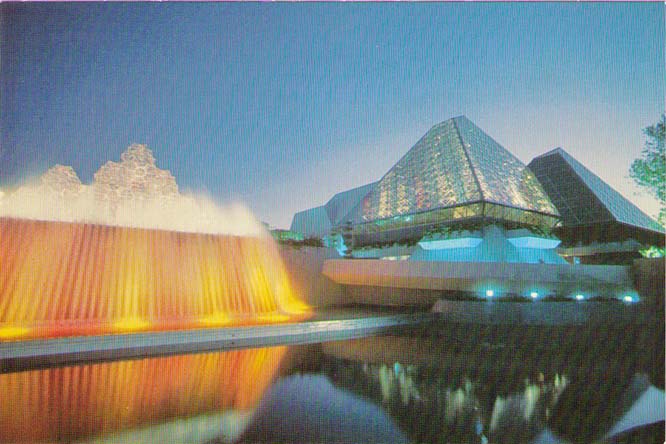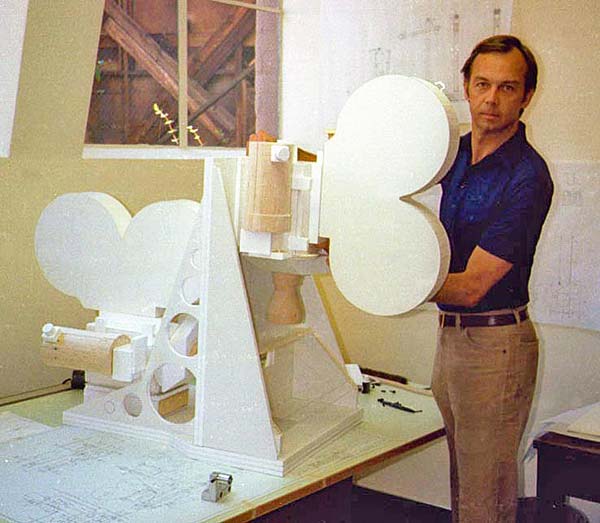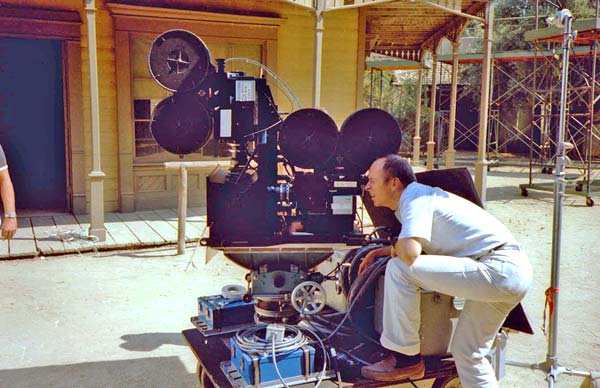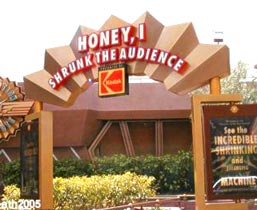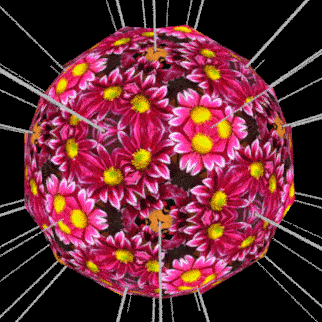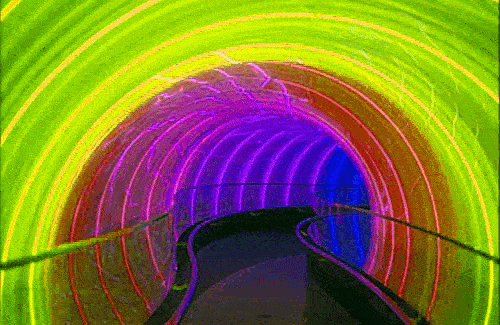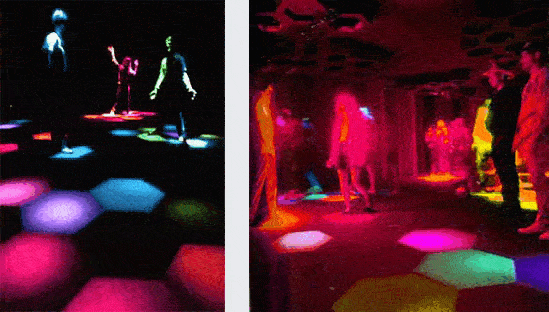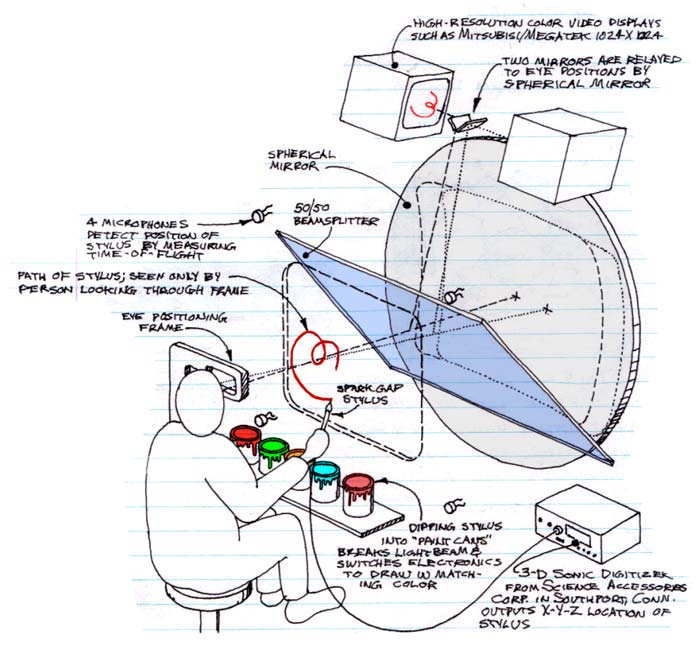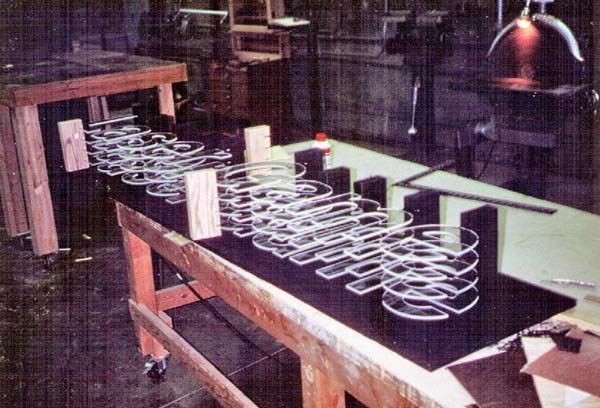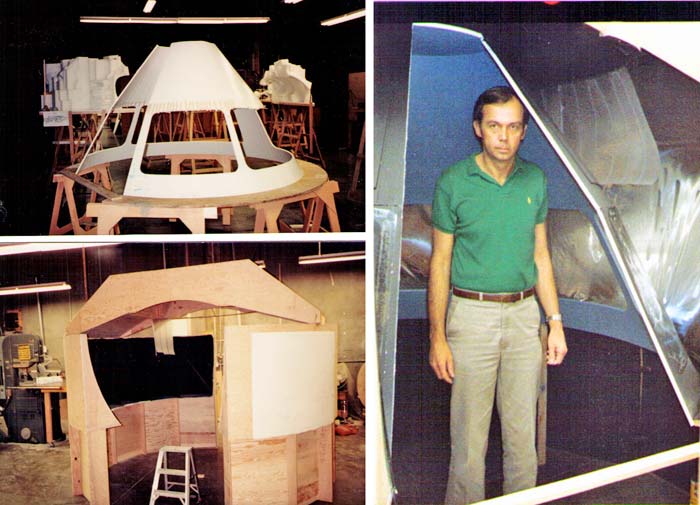Steve Hines at Disney during EPCOT
Hines’ projects for the Imagination Pavilion at EPCOT Center, Orlando, FL
(Work done at WED Enterprises, Glendale, CA, 1980-1984)
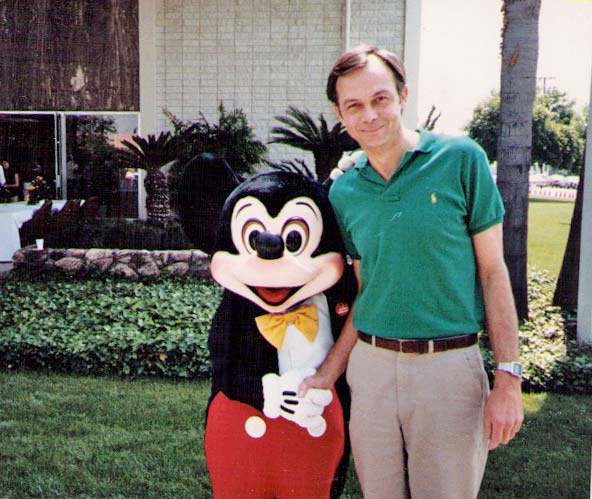
Steve Hines with good friend, Mickey Mouse, April 17, 1982
The Kodak Imagination Pavilion at EPCOT Center
The Dual-65mm Camera 3-D Rig:
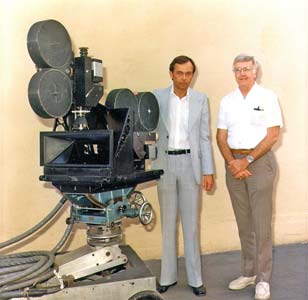 |
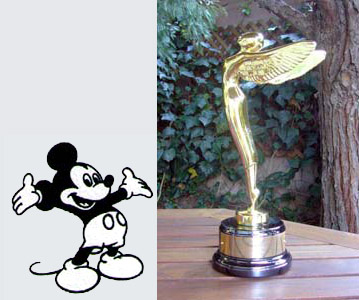 |
| Steve with Don Iwerks, rt., and the Disney 65mm 3-D Camera Rig, Pat. 4,557,570 | Awarded the International 3D Society Lumiere Trophy, 2010 |
Steve Hines, with the space buck of the 3-D camera rig.
Steve Hines with Disney 3-D rig mockup, May 1981
Paul Ryan (Director of Photography for “Magic Journeys”) on the Disney back lot with brand new 3-D rig, with two Mitchell 65mm cameras, Sept. 15, 1981.
Films shot with the Disney 3-D rig:
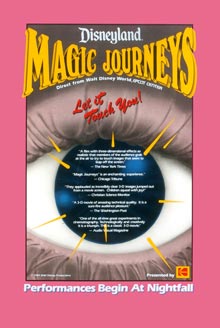 |
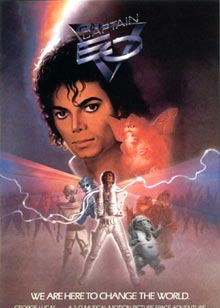 |
|
| “Magic Journeys“ | “Captain Eo“ | “Honey, I Shrunk the Audience“ |
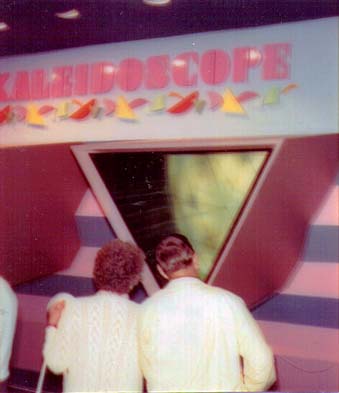 |
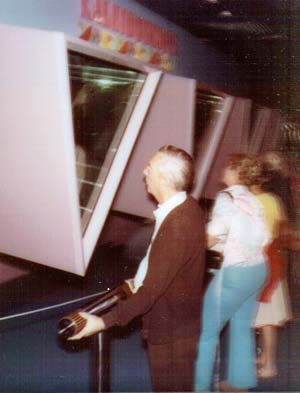 |
Large interactive Kaleidoscopes gave guests views of what appeared to be approaching planets in dark space. The controls on “T” handles set the pattern and motion across the screen (suggested by John Werner).
Zooming mirror:
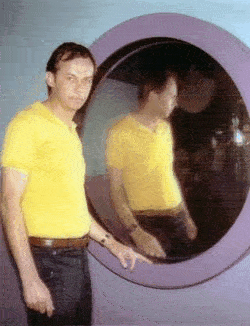 |
| Steve Hines with the thin Mylar mirror. The slow bulging in and out created a zooming effect when viewed from a distance. |
The Neon Tunnel was already planned. My contribution was suggesting that the color at the entrance follow the guest through the tunnel.
Stepping Tones:
This was one of the simplest and most popular attractions in the Imagination Pavilion, consisting of a room with colored spotlights in the ceiling, projecting spots of light on the floor. Guests step on the spots and the switches under the carpet to trigger musical tones. Guests hop around on the spots to play a tune. I gave it its name and pushed to get it included in the pavilion.
3-D Easel:
The 3-D Easel is a three-dimensional video drawing device, planned for the Children’s Creative Center.
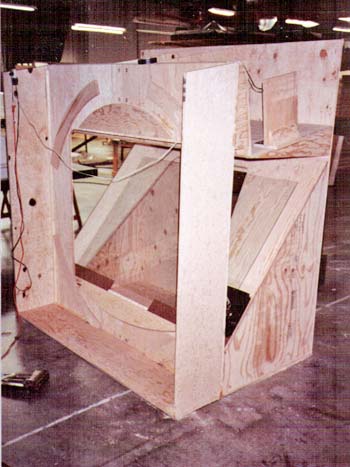 |
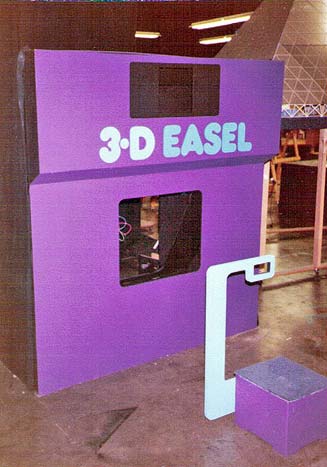 |
Guests look through an eye frame, and reach around with a brush dipped into cans of “paint”. The brush is combined with a spark-gap acoustic device, the position of which is detected by four microphones on the front of the cabinet and is drawn by the computer on the monitors from the points of view of the guests’ eyes.
A spherical mirror and beamsplitter project the monitors’ images to create a stereoscopic 3-D image that appears to flow out of the brush. This project was canceled along with the Children’s Creative Center.
Laser Game:
The sign for an interactive laser game using many programable mirrors and lasers, for two players to get their laser beams through the maze of mirrors.
On the sign, shown above, various color lasers around the edge sweep back and forth like searchlights, striking the frosted edges of the letters, to make them pop on and off. The combination of colors seen through the other clear letters was beautiful. This project was canceled.
Infinity Display:
This was an flight-simulator type display made of a Mylar mirror pulled into a spherical curve with vacuum. The effect created the appearance of looking into deep space. It was mocked up and demonstrated, but ultimately not used.

